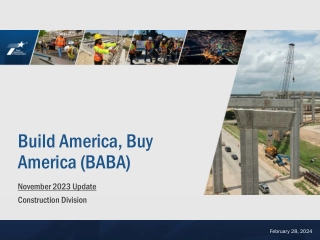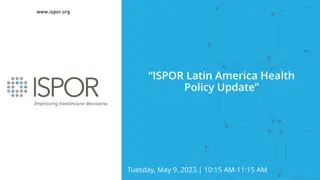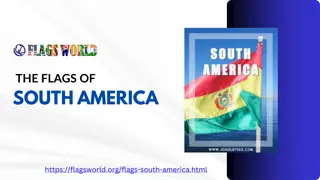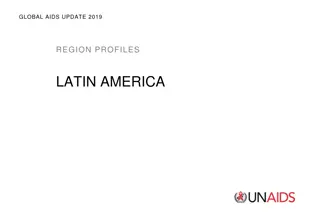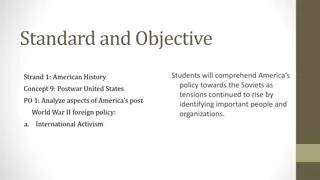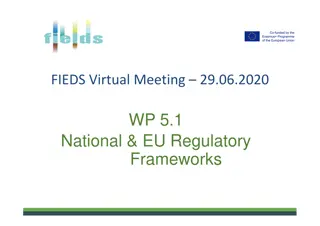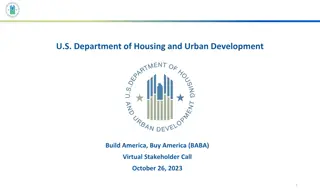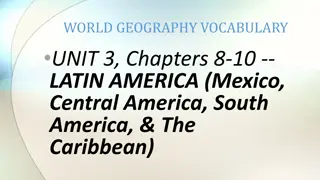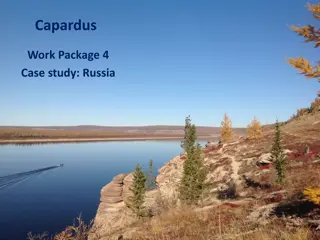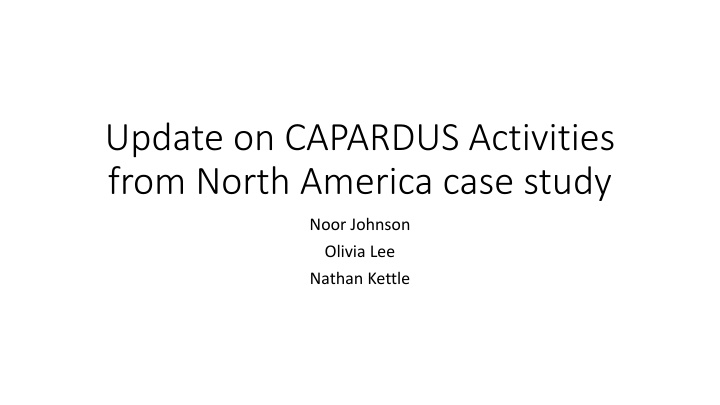
Role of Community-Based Observations in Coastal Hazard Planning for Alaska Communities
Explore the use of community-based observations in addressing environmental risks and hazards in Alaskan coastal communities affected by climate change. Learn about ongoing activities, document analysis findings, and identified themes for improved decision-making.
Download Presentation

Please find below an Image/Link to download the presentation.
The content on the website is provided AS IS for your information and personal use only. It may not be sold, licensed, or shared on other websites without obtaining consent from the author. If you encounter any issues during the download, it is possible that the publisher has removed the file from their server.
You are allowed to download the files provided on this website for personal or commercial use, subject to the condition that they are used lawfully. All files are the property of their respective owners.
The content on the website is provided AS IS for your information and personal use only. It may not be sold, licensed, or shared on other websites without obtaining consent from the author.
E N D
Presentation Transcript
Update on CAPARDUS Activities from North America case study Noor Johnson Olivia Lee Nathan Kettle
Project abstract This case study will examine the role of community-based observations in planning for and responding to environmental risks and hazards in coastal communities in Alaska. Coastal communities in Alaska are dealing with significant interrelated hazards stemming from climate change, including loss of sea ice, severe storms, and erosion. Community-based observing programs have the potential to improve availability of information for decision-makers to assess and respond to risks and hazards at different scales of decision-making. Community-based observations exist within a larger information ecosystem for climate related hazards that also includes other types of in situ and remote observations, modeling-based projections, and information about the social, cultural, economic, and political context for decision-making.
Completed activities to date - - Conducted a document review related to coastal hazards and CBM Developed list of individuals to recruit for interviews (CBM practitioners and users of information about coastal hazards). Target number = 12-15 Developed interview protocols for both CBM programs and users of coastal hazard data. Submitted IRB review documents to University of Alaska Fairbanks and project determined exempt (no IRB oversight needed) Initial outreach to interview participants - - - Other activities: - Greenland Science Week CBM book launch - Contributing to survey on APS requirements
Document analysis - A web-based search was used to identify community-based monitoring programs in Alaska related to permafrost thaw and coastal erosion. This process identified 30 documents, websites, and other grey literature. Of these, five were excluded based on further review for relevance. Search terms included combinations of the following words: permafrost, Alaska, community-based monitoring, erosion, networks, local observations. Documents were coded in NVIVO related to the following themes: capacity building, CBM programs, information ecosystem, Information needs/gaps, key individuals to interview, key partners, local knowledge enter discussion, standardization, and use of CBM in decision making. - -
Themes from document analysis - Information ecosystem: Some coordination among CBM programs focusing on coastal hazards was identified/noted. Developed a list of relevant programs to interview based on documents identified. Standardization: Referenced in 7/25 documents. Motivation for standardization includes: - Supporting communities in documenting changes they are observing in a way that they can be used for planning/action - Creating unified approach to data collection so that local observing programs can share information. - Ensuring security/integrity of data collected (more standardization could ensure that sensitive data such as harvest data is not shared) Information needs: General interest in better/more baseline data about coastal erosion and permafrost stability. Identified need for improved coordination among agencies and between agencies and communities. - -
Interview questions Data Collection and Observations Does your program support the collection of CBM data related to coastal hazards? If so, please describe. Probes: Which programs do you support? (i.e., where they are active) How do you support these programs? How long have you supported these programs? What are your motivations for supporting these CBM data collection efforts? Were you involved in any decisions on how the data were to be collected and what collection protocol to use? How are the observations being collected? Are there other organizations/entities that have informed your approach to data collection? What tools and/or systems do you use for data sharing and management?
Interview questions Use of Observations and other information sources Does your program or organization work to provide CBM observations and other data related to coastal hazards to particular end users? If so, what information do you provide? Who is your primary user group (and to whom)? If not, do communities you work with have access to this information from a different source? (And what is the source) Do you work with decision makers or planners who use CBM observations related to coastal hazards? If yes, please describe how you work with them? Who do you work with? (Specific names and/or organizations and roles) What information is being used? Are there challenges in sharing CBM information with decision makers and planners? If it s not being used, is it being compiled to establish a baseline understanding, such that it could be used in the future? Are any changes needed in CBM data to make this information more usable? Are there other uses for CBM data that we have not discussed? Are observations used in particular types of products (i.e. hazard mitigation plans, adaptation plans, community infrastructure plans, etc.)? Can you give specific examples of products that have used data from your program? What do you see as the major barriers to more widespread use of CBM observations for coastal hazard mitigation and planning?
Interview questions Collaboration and sharing with CBM programs (beyond data collection): Have you collaborated in other ways with CBM programs? If yes, what form has the collaboration taken? What motivated that collaboration? Have you had any challenges in your efforts to collaborate with CBM programs? If so, please describe. How do the tools and/or systems you use to manage data and knowledge support or hinder your ability to share data? Do you have interest in contributing to/being part of a web-based platform to exchange methodologies, guidelines, or effective practices relevant to community-based monitoring with other programs or communities? What capabilities would you want this platform to have? What concerns or constraints would you place on this system in terms of sharing information? Is there anything else about collecting or sharing observations related to coastal hazards that you d like to share?
Next steps Conduct interviews (Jan/Feb) Review for themes (March)) Develop a description of information ecosystem for coastal observing and the role of CBM in that system (March) Create a map/visual depiction of ecosystem (March) Convene two online focus groups to review this description for accuracy, discuss gaps and opportunities for improving the ecosystem for improved information to support decision- making (April/May)

